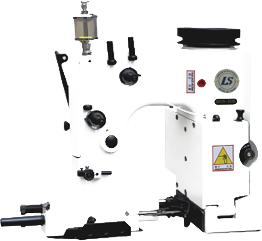types of lockstitch sewing machine
Understanding the Different Types of Lockstitch Sewing Machines
Lockstitch sewing machines are fundamental tools in the world of textiles and garment manufacturing. They are designed to create a strong and durable stitch by interlocking two threads one from the needle and one from the bobbin. While the fundamental mechanism of the lockstitch remains the same across various models, several types cater to different sewing needs, preferences, and industrial requirements. In this article, we will explore the diverse types of lockstitch sewing machines, delving into their features, applications, and unique characteristics.
1. Mechanical Lockstitch Sewing Machines
Mechanical lockstitch sewing machines are the traditional models that many people are familiar with. Operated by hand or foot pedal, these machines rely on mechanical components such as gears and levers to stitch fabric. They are typically less expensive than their electronic counterparts and are favored by hobbyists and beginners for basic sewing tasks. These machines are versatile and suitable for a range of projects, including garments, home decor, and quilting.
2. Electronic Lockstitch Sewing Machines
As technology has evolved, so too have sewing machines. Electronic lockstitch sewing machines come equipped with computerized functions that enhance their capability and ease of use. These machines often feature automatic needle threading, stitch selection, and tension adjustments, making them user-friendly and efficient. They are ideal for intermediate to advanced sewists who require precision and versatility. Additionally, electronic machines offer a broader range of stitch options, including decorative stitches, making them perfect for creative projects.
3. Industrial Lockstitch Sewing Machines
Industrial lockstitch sewing machines are specifically designed for high-volume production environments, such as garment factories or manufacturing plants. These machines are built for speed and durability, capable of stitching large quantities of fabric quickly and efficiently. They often have a powerful motor and a robust build, allowing them to handle various materials, from lightweight fabrics to heavy-duty textiles. Industrial machines may also come with advanced features such as programmable settings, automatic thread trimming, and conveyor belt systems to streamline the sewing process.
types of lockstitch sewing machine

4. Overlock Lockstitch Sewing Machines
While technically not purely lockstitch machines, overlock sewing machines, or sergers, employ a similar principle of interlocking threads. They are primarily used for finishing edges and seams, preventing fraying, and providing a professional finish to garments. Overlock machines can sew, trim, and overcast simultaneously, making them a valuable addition to any sewing workshop. Many modern overlock machines offer the ability to combine stitches, further expanding their capabilities.
5. Coverstitch Lockstitch Sewing Machines
Coverstitch machines are specialized machines used primarily for hemming and finishing the edges of knit garments. They create a strong, durable stitch on the outside while leaving a flat, smooth finish on the inside. This makes them ideal for activewear and garments needing stretch. Coverstitch machines can be quite complex, often having multiple needles and looper configurations, allowing for various stitch styles and widths.
6. Walking Foot Lockstitch Sewing Machines
Walking foot lockstitch sewing machines are designed for heavy materials that may shift during sewing, such as leather, upholstery, or multiple layers of fabric. The walking foot feature ensures that the machine feeds the top fabric in sync with the bottom feed, preventing slipping and misalignment. These machines are popular among professionals who work with heavy-duty materials, as they provide a stable and smooth sewing experience.
Conclusion
Lockstitch sewing machines come in various types, each tailored to specific sewing requirements and capabilities. From mechanical models perfect for beginners to advanced electronic machines suitable for creative projects, and from industrial units designed for high-volume production to specialized overlock and coverstitch options, understanding the different types can help you choose the right machine for your needs. Whether you are a hobbyist, a professional seamstress, or a manufacturer, investing in the right lockstitch sewing machine will enhance your sewing experience and the quality of your finished products. As you delve deeper into the world of sewing, knowing the intricacies of these machines will empower you to bring your creative visions to life with precision and style.
-
Heavy Duty Leather Sewing Machine: A Must-Have for Professional LeatherworkNewsMay.28,2025
-
Leather Sewing Machine: Essential for High-Quality LeathercraftNewsMay.28,2025
-
Extra Heavy Duty Sewing Machine for Premium Leather ApplicationsNewsMay.28,2025
-
Walking Foot Cylinder Arm Sewing Machine: Precision and Power CombinedNewsMay.28,2025
-
Industrial Cylinder Arm Sewing Machine: Engineered for High-Performance StitchingNewsMay.28,2025
-
Cylinder Bed Sewing Machine: A Powerful Solution for Precision StitchingNewsMay.28,2025
-
Zigzag Sewing MachineNewsMay.12,2025





























